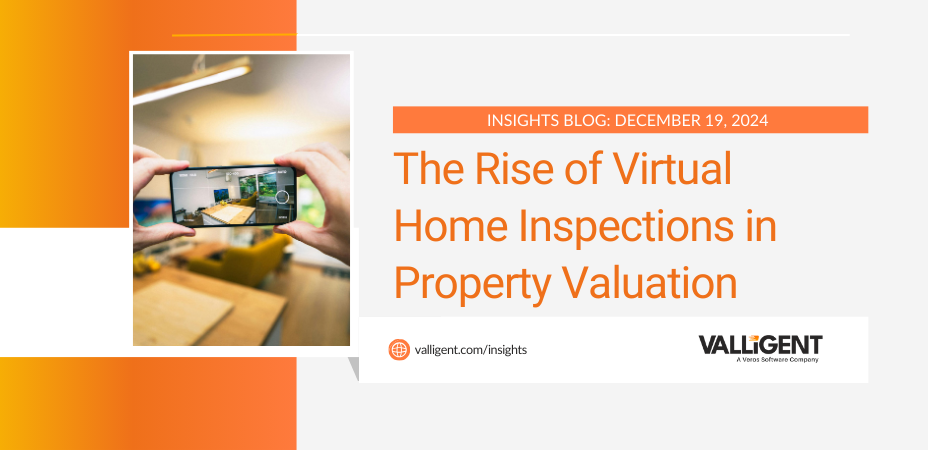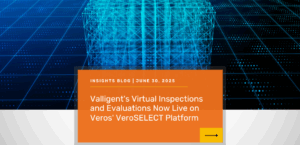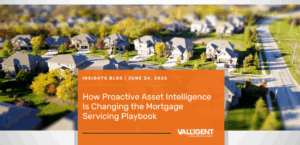The trend of inspecting and valuing real estate properties remotely/virtually is steadily growing. Valligent is leading the way in offering top-of-the-line virtual solutions – like those in the Virtual Property Valuation Suite. This shift is largely fueled by technological advancements, evolving consumer preferences, and the demand for greater efficiency and cost savings in the real estate market. Understanding what is contributing to this rise and its implications for parties involved in the lending process is key to appreciating the impact of going virtual.
Ongoing Technological Advancements
One of the primary reasons for the increase in remote property inspections and valuations is the rapid advancement of technology. Virtual inspection tools, such as Valligent’s ValINSPECT Virtual, now enable appraisers and inspectors to assess properties without being physically present. For instance, appraisers and inspectors can use a real-time, live-streaming video connection to conduct virtual inspections, where a property contact provides a guided tour of the home through a secure link on a mobile device. Additionally, methods offer the ability to capture still photos and geolocation data to ensure the inspector and/or appraiser is evaluating the correct property.
This innovation not only eliminates travel costs but also accelerates the evaluation process. Virtual property inspections have a wide range of applications, including verifying completed construction or repairs (such as for a 1004D Completion Cert), confirming the condition of investment properties, and conducting timely post-disaster inspections, among others.
Changing Consumer Preferences
The COVID-19 pandemic fueled a shift in consumer behavior towards digital solutions. Many individuals have grown accustomed to conducting transactions online, from shopping to banking, which has extended into real estate. Many homeowners now prefer convenience and speed; thus, they are more inclined to utilize virtual methods for property inspections and valuations. The comfort of avoiding physical interactions—especially in light of health concerns—has made virtual inspections appealing not just for appraisers but also for homeowners who wish to maintain their safety.
Furthermore, increased familiarity with technology through activities such as online shopping, remote work, and telehealth has made consumers more comfortable adopting digital tools in real estate and finance. Convenience and speed have become the cornerstones of modern consumer expectations.
Enhanced Speed and Efficiency in the Lending Process
Remote property inspections and valuations increase efficiency for lenders and appraisers. In contrast to traditional desktop appraisals
This increased efficiency translates into faster loan processing times for lenders as well. With quicker inspections, loans can close sooner, enhancing overall productivity within financial institutions.
Cost-Effectiveness for Borrowers and Lenders
Remote property inspections and valuations can also be more cost-effective than traditional methods. One of the largest cost savings comes from eliminating the need to pay inspectors for travel to the property. When appraisers can complete their work from their physical primary work location, they save on driving time and gas, allowing them to focus more efficiently on the valuation process. This cost reduction is particularly beneficial during economic downturns when every expense counts.
Expanded Market Reach for Residential Lending
Remote inspections and valuations break down geographical barriers, allowing lenders to serve clients in rural, remote, and underserved areas. This flexibility is especially beneficial for homebuyers and families in regions where appraisers are limited or unavailable. By eliminating the constraints of physical location, lenders can provide valuation services to a broader range of homebuyers, ensuring that more people—regardless of their location—have access to fair and timely lending opportunities.
Mitigating Risks with Advanced Technology
Remote inspections and valuations can often integrate data analytics and automated valuation models (AVMs) to improve accuracy. These technologies process vast datasets, incorporating public records, market trends, and historical data to provide reliable property valuations. By leveraging AVMs such as VeroVALUE and comprehensive data analysis, lenders receive consistent, high-quality assessments, allowing them to make confident and informed lending decisions while reducing potential risks.
Improving the Property Contact Experience
The convenience of remote inspections and valuations leads to a more positive overall experience for property contacts. Faster turnaround times, reduced costs, and the ease of digital processes simplify what can often be a stressful part of the loan application. Property contacts appreciate the efficiency and flexibility that remote inspections and valuations offer, making the lending process smoother and more accessible.
The Future of Lending
As technology continues to evolve, remote inspections and valuations are poised to become an integral component of the lending industry. Their speed, cost-effectiveness, and flexibility empower lenders to make smarter decisions while serving borrowers more effectively.
Embracing remote inspections and valuations isn’t about keeping up but staying ahead.
Want to learn how remote inspections and valuations can enhance your lending operations? Explore Valligent’s comprehensive suite of Virtual Valuation offerings, including virtual inspections, evaluations, appraisals, and more. Contact our Valligent team today!




